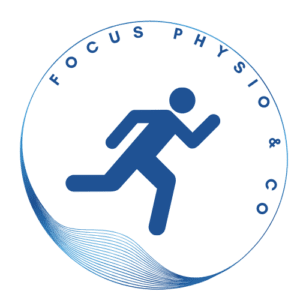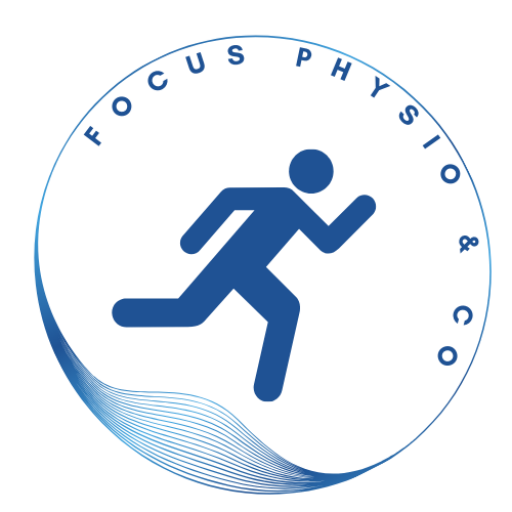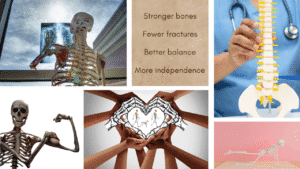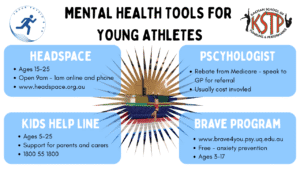When you think about athletic performance, your mind probably jumps to strength, flexibility, or stamina. But beneath every backflip, every skill learned, and every training session powered through, there’s something even more crucial at play; your brain.
And for athletes aged 10 to 16, their brains are in the thick of some of the most intense development they’ll ever go through. So, let’s talk about it openly, practically, and without stigma.
Mental Health: It’s Biology, Not Weakness
Let’s clear something up from the start: mental health is biology. It’s not weakness. It’s not drama. It’s not imaginary.
Mental health challenges happen when different parts of the brain aren’t communicating effectively or when there’s a chemical imbalance. Just like a strained hamstring or an inflamed ankle, mental health concerns are physical in origin, they just happen to live in the brain.
And because of how the brain develops, the teenage years are prime time for these issues to appear.
Brain Fact Check (And Why It Matters)




Translation? Teens are wired to feel more, take risks, and struggle to regulate, not because they’re broken, but because their brain is doing its job. Growing.
Anxiety: The Useful Alarm That Can Get Stuck
Anxiety often gets a bad rap, but here’s the truth: we need anxiety. It’s our inbuilt alert system, the reason we don’t run head-first into danger or why we focus when we’re about to do a tricky skill.
But sometimes that alarm gets stuck on. When it’s overwhelming, persistent, and impacts sleep, concentration, or social life. That’s when it needs attention.
Quick anxiety hack: Apply ice to the back of the neck. It stimulates a nerve pathway (the vagus nerve) that helps calm the nervous system instantly.
What not to do? Avoidance. If anxiety shows up during training and your response is to quit or back away completely, it reinforces the fear. A better approach is gradual re-engagement, building confidence from the basics.
Depression: When the Joy Disappears
Depression in teens can be tricky to spot. It’s not always sadness. Often, it looks like numbness, withdrawal, or extreme fatigue. Some warning signs:
- Loss of interest in usual activities
- Changes in appetite (usually loss)
- Persistent low mood for 2 weeks or more
- Sleeping far more than usual — or not at all
- Disconnecting from friends and family
One of the most subtle early indicators? Lack of hunger, despite big physical outputs like training. Teen athletes need huge amounts of fuel, so loss of appetite is a red flag, not a “win.”
Sleep: The Underrated Performance Booster
Sleep is where:
- Skills are consolidated (that skill you practiced? Locked in during sleep).
- Mood is regulated
- Physical and mental recovery happens
Without quality sleep, the risk of both injury and mental health issues skyrockets. Aim for 9–10 hours per night for teens, and treat it as seriously as any other part of training.
Talking Helps (Even If You Don’t Feel Like It)
Talking to a trusted adult, coach, or health professional can make all the difference. There are heaps of free resources now available for kids and teens:
- Kids Helpline (ages 5–25) – Call, text, or chat online anonymously.
- Headspace – In-person or online mental health support.
- BRAVE Program – A free, evidence-based online program designed to prevent and treat anxiety in young people. https://brave4you.psy.uq.edu.au
Parents: Ask your GP about a Mental Health Care Plan to access subsidised psychologist sessions.
Mindfulness: Not Just a Buzzword
Mindfulness is simply being present in the moment. And most young athletes are already doing it every time they’re fully focused mid-skill. But outside of training, it’s just as valuable.
Try:
- Drawing
- Playing music
- Walking without a phone
- Colouring
- Breathwork or guided meditations
- Weight training or yoga
- Even 20 minutes a day of mindful activity can help reduce anxiety and depressive symptoms.
Play: The Most Underrated Therapy
Play isn’t childish. It’s crucial. Being silly, laughing, playing games; they’re not distractions from serious life, they’re how kids process emotion, connect socially, and build resilience. Encourage it. Model it. Don’t outgrow it.
Final Takeaways
Mental health isn’t about fragility. It’s about brain development, chemical messaging, and environmental load. And just like we condition muscles to be strong and prevent injury, we can support and train the mind to stay resilient.
If you’re a young athlete (or raising or coaching one), remember:
- Mental health challenges are common and treatable
- The brain is still developing until the mid-20s
- Sleep, nutrition, connection, and play are non-negotiables
- Avoidance fuels anxiety — exposure and support build confidence
- Talking to someone (even anonymously) can be a game-changer
Let’s keep building athletes who are not just strong but mentally agile, emotionally supported, and well-equipped for life.
Youtube link to the talk if you prefer to watch/listen
Author: Kate Harris





